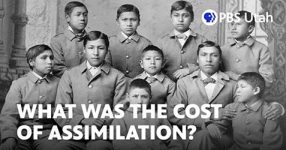The documentary “Hobo (1992)” provides a captivating glimpse into the lives of individuals who embrace the transient lifestyle of riding trains and navigating the vast American landscape. The title itself hints at the central theme – the exploration of a subculture often overlooked by mainstream society. Through the candid words of the subjects and the rawness of their experiences, the film offers an intimate portrayal of the challenges, camaraderie, and unique perspectives that define the hobo way of life.
Journey into the Hobo Subculture
The documentary delves into the ethos of the hobo lifestyle through the lens of Beargrease, a seasoned traveler who shares insights into the code of conduct among hobos. The narrative paints a picture of a society born out of repression and hopelessness, where individuals adopt aliases like Beargrease, Steam Train, or Caribou. The railroads serve as a refuge, offering a return to a more genuine humanity, stripped of societal judgments. The transient nature of these encounters allows for anonymity and a mutual understanding that refrains from prying into personal lives.
As the documentary unfolds, it becomes evident that riding the rails is more than a means of transportation; it’s a rebellion against societal norms. The subjects speak of a camaraderie reminiscent of wartime solidarity during Vietnam. The allure of the hobo lifestyle lies in its ability to keep individuals grounded and resilient, fostering a sense of shared experience that transcends conventional societal expectations.
Challenges and Reflections on the Road
Amidst the rhythmic background of mournful harmonica and lilted acoustic music, the documentary introduces the challenges faced by hobos. The harsh reality of police harassment, the constant need to be vigilant, and the discouragement to move on from towns depict the struggles inherent in their chosen lifestyle. The hobos’ defiance against societal norms and the authorities paints a poignant picture of individuals who find a sense of purpose and identity on the fringes of society.
The film captures the dichotomy of hobo life – the freedom sought on the open rails and the harshness of survival. The telegraph of information among hobos, sharing knowledge about hot yards and tragic incidents, underscores the risks involved in their chosen path. The constant battle against the elements, portrayed vividly through encounters with snow and cold, reflects the resilience required to embrace a life of uncertainty and impermanence.
Diversity within the Hobo Community
“Hobo (1992)” introduces viewers to the diverse personalities within the hobo community, each with their unique stories and perspectives. From Beargrease’s wisdom to encounters with other travelers like Scott and Minot Louis, the documentary sheds light on the multifaceted nature of the hobo lifestyle. The intersectionality of age, race, and personal backgrounds among hobos challenges stereotypes and emphasizes the shared humanity that unites them on the rails.
The film captures moments of reflection and introspection, such as when Beargrease contemplates the role of the Lord in his life. The juxtaposition of religious themes and the rugged reality of the hobo lifestyle adds layers of complexity to the narrative, highlighting the individualized ways in which hobos grapple with existential questions and find meaning within their transient existence.
Challenges and Social Commentary
The documentary does not shy away from addressing the socio-political landscape that influences the hobo lifestyle. The challenges posed by authorities, the erosion of rights, and the perceived need for a radical change in the face of societal inequality are woven into the narrative. The subjects express a yearning for someone like Kennedy to champion their cause, revealing a deeper discontent with the political system and the erosion of their rights without democratic input.
In examining the hobo perspective on theft and survival, the film challenges conventional moral judgments. It underscores the resilience of individuals who, faced with adversity, choose unconventional paths to survive. The juxtaposition of societal expectations and the lived experiences of hobos prompts viewers to reconsider preconceived notions about morality and the choices made by those living on the fringes.
A Journey into the Heart of the Hobo Lifestyle
In conclusion, “Hobo (1992)” transcends its title to offer a profound exploration of a subculture that exists on the margins of society. Through the voices of its subjects and the evocative cinematography, the documentary provides a rare glimpse into the challenges, camaraderie, and reflections that define the hobo way of life. The title encapsulates not just a mode of transportation but a journey into the heart of human resilience, unconventional freedom, and the search for meaning in a transient existence.












